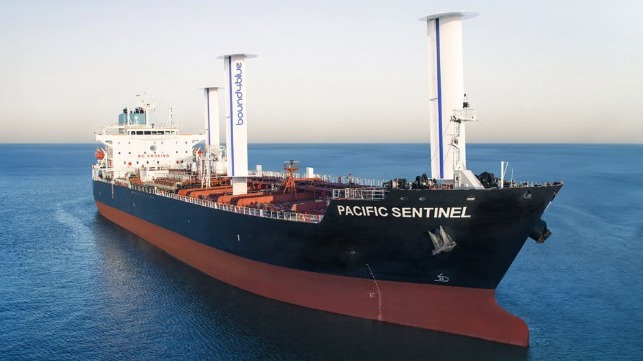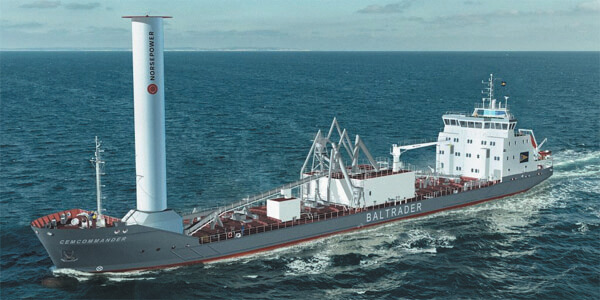EPS Joins Growing Number of Shipping Companies Looking to the Wind

Wind-assists propulsion is quickly gaining momentum in the shipping industry with an increasing number of majors moving to test the competing technologies. In another sign of acceptance of the potential, Singapore-based Eastern Pacific Shipping, one of the recognized leading operators that oversees a fleet of over 250 vessels and 25 million dwt, will be testing suction sails. Their first installation will proceed late in 2024 while other companies are moving forward with the wind rotor technology.
Eastern Pacific has agreed to install three of the suction sails developed by Spain’s Bound4blue in a program that the sail manufacturer calls a “role model for shipping.” The suction sail works with an air wing design which drags air across the aerodynamic surface to generate propulsive efficiency. Bound4blue is a 10-year old company that says its three sizes of suction sails (ranging from 12 to 36 meters) are suitable for tankers, bulkers, RoRos, cruise ships, ferries, gas carriers, and general cargo.
“Signing an agreement with an industry player of the scale and reputation of EPS not only highlights the growing recognition of wind-assisted propulsion as a vital solution for maximizing both environmental and commercial benefits,” said José Miguel Bermudez, CEO and co-founder at Bound4blue.
The Pacific Sentinel, a 2019-built chemical tanker registered in Liberia will be the first EPS-managed ship to test wind-assisted propulsion. The 50,000 dwt ship is owned by Japan’s Kotobuki and measures 600 feet (183 meters) in length. During the fourth quarter, it will be fitted with three Bound4blue eSails. Each stands 72 feet (22 meters) off the deck.
According to the companies, working in tandem with the existing propulsion system, the sails will use an autonomous control system to optimize power and reduce engine load and fuel consumption. EPS expects to reduce overall energy consumption by approximately 10 percent, depending on vessel routing.
“With this project, we are confident that the emission reductions gained through eSAILs® on Pacific Sentinel will help us better evaluate the GHG reduction potential of wind-assisted propulsion on our fleet in the long run,” commented Cyril Ducau, Chief Executive Officer at EPS.

A recently completed cement carrier will be fitted with a rotor sail in a program supported by the Germany government (Norsepower)
Governments are supporting the expansion of wind-assisted propulsion through a series of grant programs. The trial on the EPS-managed vessel is being co-founded by the European Union under a grant from the Innovation Fund program. In another example, the German Federal Ministry for Digital and Transport as part of its efforts to improve the energy efficiency of coastal vessels has also awarded funding for the installation of the Norsepower Rotor Sail on a newbuild cement carrier.
The recently completed Cemcommander (5,876 dwt), built by Jiangsu Zhenjiang Shipyard in China is 370 feet (113 meters) in length and will be fitted with one 79 x 13 foot (24 x 4 meter) rotor sail in summer 2024. The vessel is being commercially operated by Baltrader Schifffahrtsgesellschaft with BRISE Bereederungs as the technical manager. Norsepower reports they can expect up to a 14 percent reduction in emission from the operation of the rotor.
